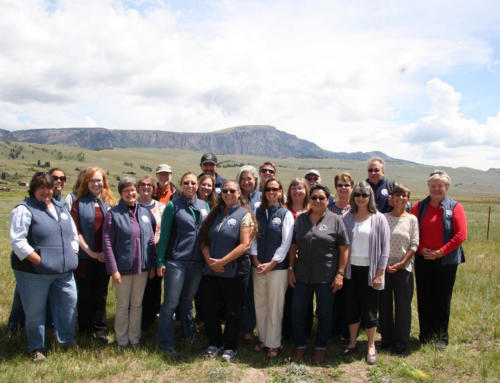The Challenge
In the Spring of 2020, public health leaders in the San Joaquin Valley of California, a region of almost four million people across 25,000 square miles, were challenged by the novel coronavirus. The region includes both urban and rural counties and local health departments have widely varying levels of staff capacity and resources ─ the largest have 400 staff, while the smallest have less than 25.
Responding to the ever-changing COVID-19 pandemic required accurate and accessible epidemiological data to inform mitigation strategies and policies. In several counties in the region, local health departments have no existing epidemiology capacity. Furthermore, as isolating and preventing the virus from spreading across county lines became futile, access to epidemiological data across the region grew more important.
Pursuing Shared Epidemiology Services
In April 2020, soon after emergency shelter-in-place orders were given by California’s governor in response to the COVID-19 pandemic, several counties in the Golden State’s San Joaquin Valley Public Health Consortium (SJVPHC) and adjacent foothill/mountain area banded together to share data and epidemiologic capacity. Led by an epidemiologist from a local university partner – UCMerced – who was financially supported by two member counties, the group began meeting one or two times per week. During these meetings, the group would review the available COVID-19 data, identify and work through emerging issues related to the data, and ultimately produce epidemiological reports for the seven participating counties and Yosemite National Park. The reports also were shared with local healthcare partners and the California State Department of Health. These reports included case surveillance data (e.g., new cases per 100,000 population by county), hospital capacity (e.g., number and percent of available ventilators in each county), and percent of the population vaccinated in each county.
Results
Collaborative participants identified numerous benefits to participating in the shared epidemiology group, above and beyond those related to data sharing. Specific results include:
- Peer Support: Group members became a source of technical and emotional support for each other, and this was particularly helpful for those from less-resourced departments. As one interviewee said, “especially for people in very small counties, there’s a lot of value in just airing out their problems and finding support by talking to people who are dealing with the same problems on a day-to-day basis.”
- Communication & Collaboration: The regular meetings allowed participants to share information about challenges in one county, that could inform action and preparation across the region. Additionally, the state health department benefitted from a single communication on behalf of all seven counties. At the local level, one interviewee described this benefit saying, “We’ve gotten quicker answers [from state partners] because it’s a shared initiative.” Two participants successfully used the group’s efforts to persuade their local hospital to use the CDC National Syndromic Surveillance Program. Finally, acknowledging how frequently each county’s residents travel throughout the region, one interviewee noted the potential for collaborative disease surveillance efforts to address other diseases and conditions in the future.
- Learning Opportunities: Regularly discussing the data, challenges and potential solutions with collaboration members from both large and small public health jurisdictions provided a consistent learning opportunity for participants. This learning opportunity was particularly pronounced for less experienced participants. As one participant said, “I’ve stepped into this role since we don’t have an epidemiologist in the county. So it really has been a learning experience for me…to learn from what other people are doing, what they have done, and ask questions to better understand what best practices are being done in other counties…”
Keys to Success
The following factors were key to the overall success of the collaboration:
- Informal Meetings: The informal nature of the group meetings provided ample opportunity for members to freely share their experiences and receive valuable peer support. Members could bring their needs and challenges to the meetings and have them considered and discussed right then and there.
- Group Size: The group was relatively small. Participants were able to have their specific needs heard and build relationships with each other in ways that may have been more difficult if the group were larger.
- Shared Geographical Identity: The group was bound to the San Juaquin Valley, geographical boundaries that facilitated shared identity and shared experiences. Group members noted challenges in the Valley that were different than those faced in other areas of the state. Additionally, the collaborative partners served a population that frequently moved between geographic boundaries within the region.
- Membership Diversity: The group benefitted from included epidemiologists from counties with varying resource and population characteristics. The diversity of circumstances, experiences and approaches between urban and rural counties was a benefit to the collective learning and collaboration of the group.
Moving Forward
The group continues to meet monthly and leaders explore ways to expand membership. Additionally, members are working to identify funding sources to recruit and hire a permanent regional epidemiologist. Based on a capacity evaluation completed by the SJVPHC staff, five counties in the region have no full-time epidemiologist. Hiring a senior epidemiologist for a regional position is estimated to cost $146,118. If the cost of this position were equally shared among the five counties without an epidemiologist, the cost per county would be $29,223. If each of the 11 counties in the SJVPHC equally shared the costs, each would pay $13,283.
Pursuing a shared epidemiologist arrangement for the consortium could be a cost-effective mechanism for increasing epidemiological capacity and facilitating collaboration in the region, particularly for rural counties. As public health leaders in California and across the country consider how to move our public health system forward and be better prepared for future challenges, a regional epidemiologist model could be considered.
The San Joaquin Valley Public Health Consortium is composed of directors, deputy/assistant directors, and health officers from eleven counties in central California – Calaveras, Fresno, Kings, Madera, Mariposa, Merced, San Benito, San Joaquin, Stanislaus, Tulare, and Tuolumne. The SJVPHC county health departments were joined in the collaborative by partners from the University of San Francisco, UCMerced, the California Department of Public Health, and the National Park Service through Yosemite National Park.


